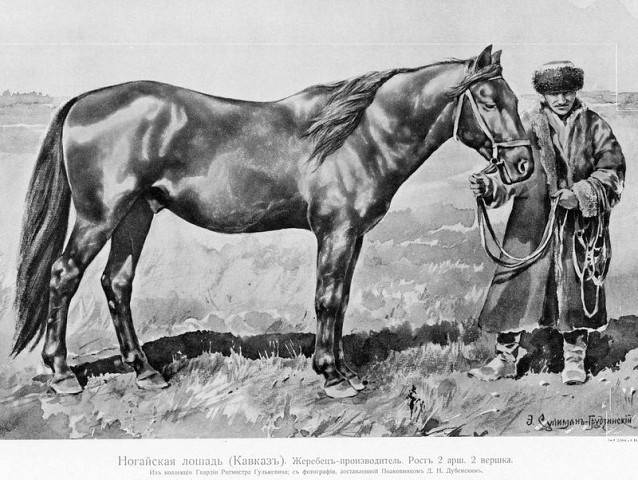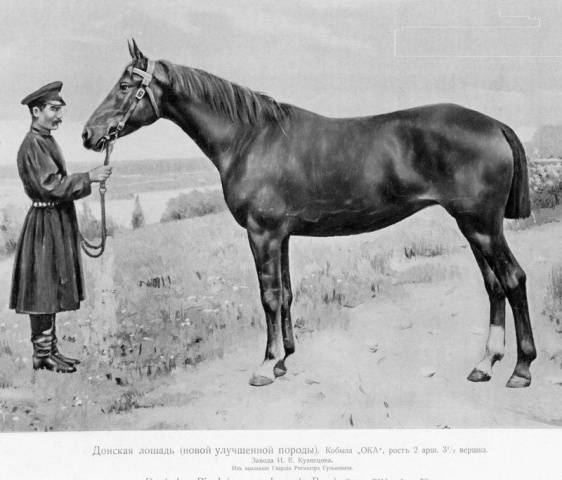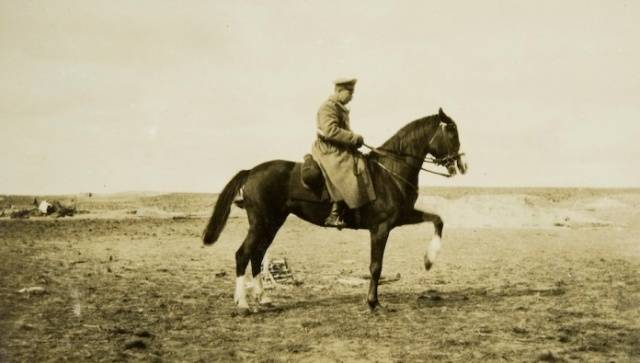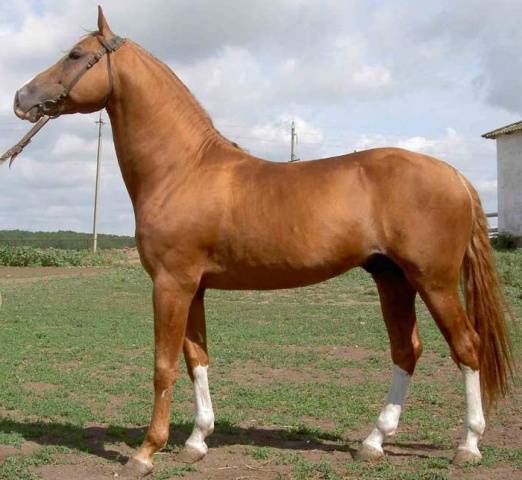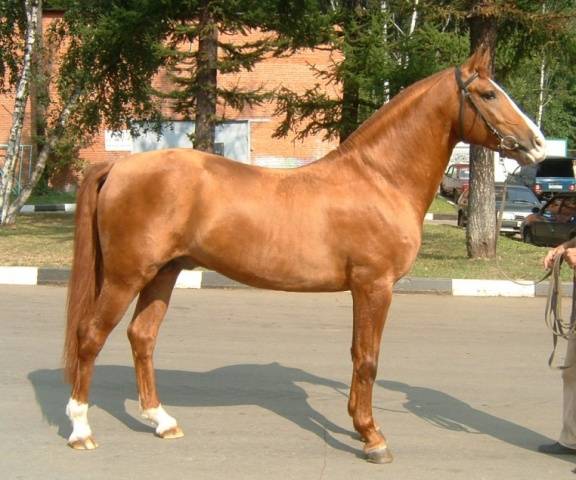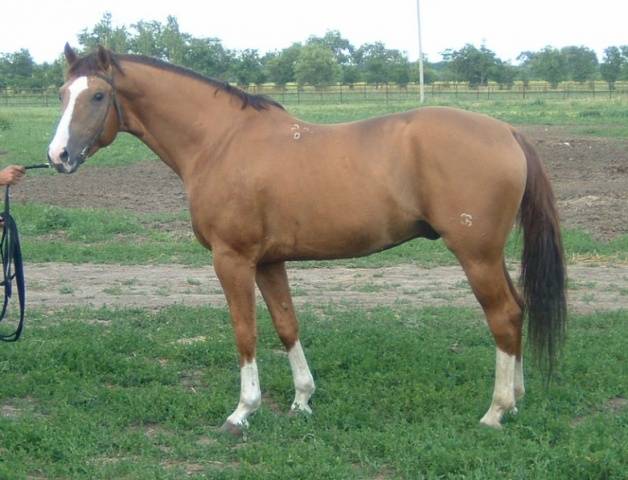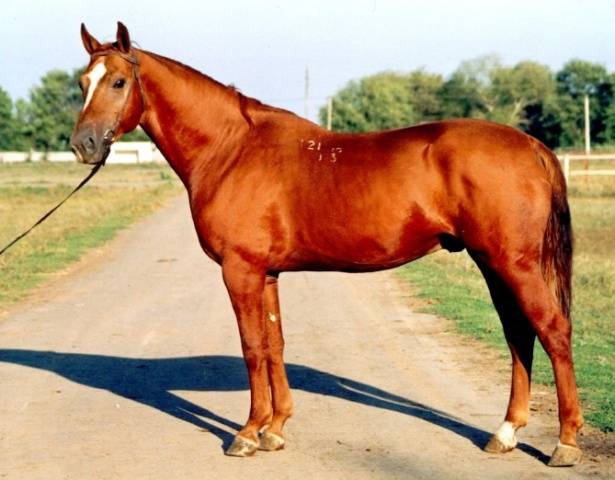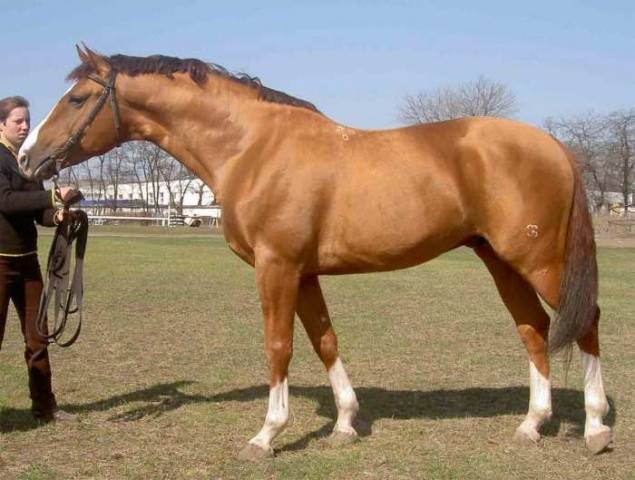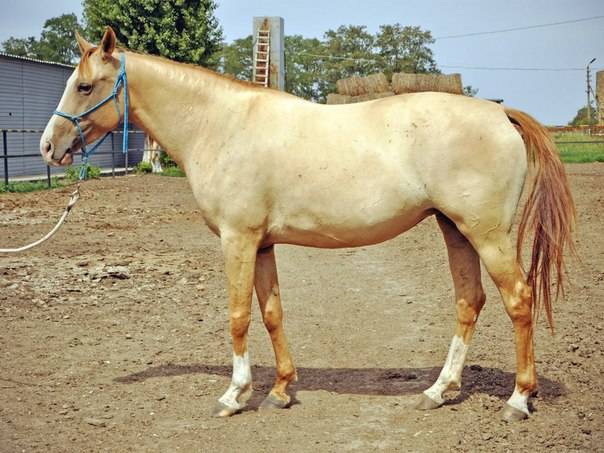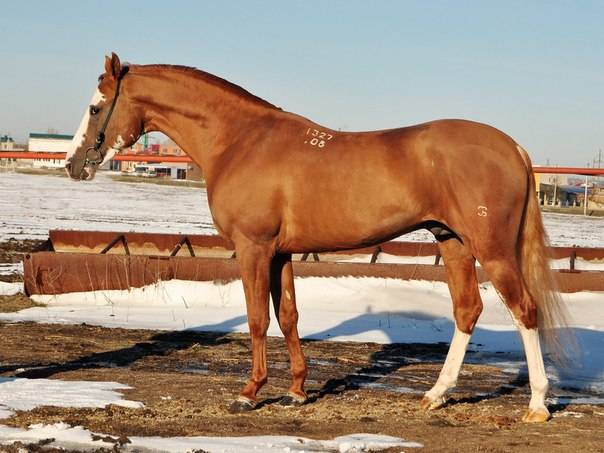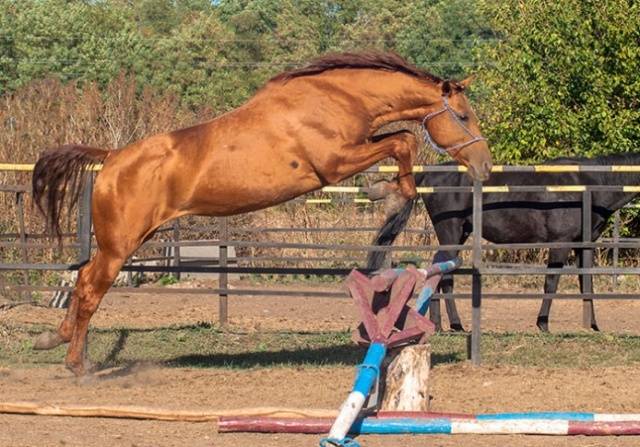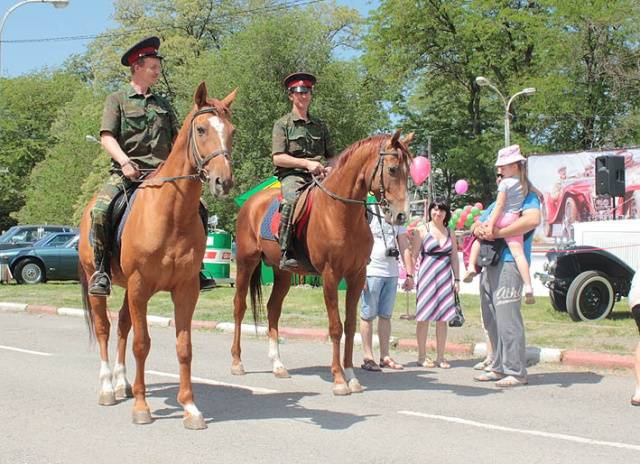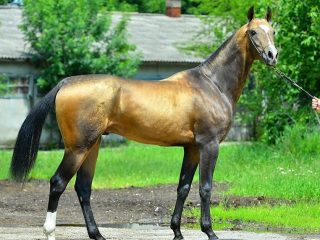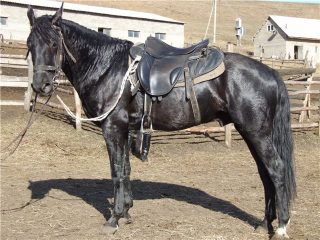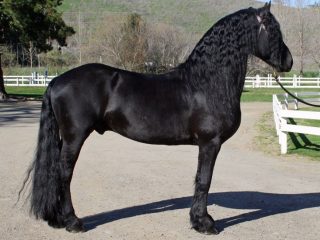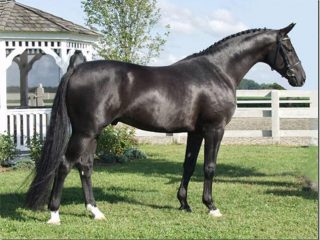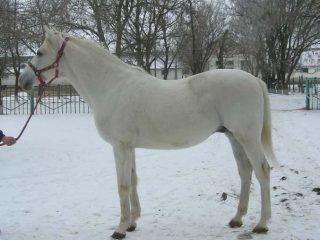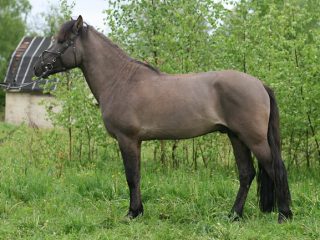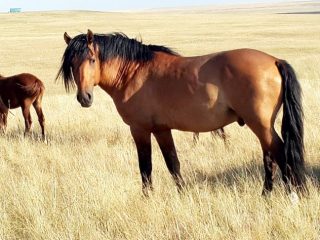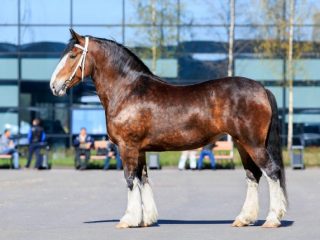Content
The modern Don horse is no longer the fruit of folk selection, although this is how the breed originated. From the 11th to the 15th centuries, in the region of the Don steppes there was what was called the “Wild Field” in Russian chronicles. This was the territory of nomadic tribes. A nomad without a horse is not a nomad. In the 13th century, Tatar-Mongol tribes invaded the same territory. Naturally, Mongolian horses mixed with the local steppe stock. Some of the Tatar tribes remained on the territory of the Don steppes and, after the name of their leader, Khan Nogai, took the name Nogai. Hardy, fast and unpretentious Nogai horses were highly valued in Rus' and were one of those that were called argamaks in those days.
After the introduction of serfdom, peasants began to flee to the outskirts of the Russian state, where the central government could not yet reach them. The fugitives formed gangs, making a living as robbery. Later, the Moscow authorities acted on the principle “if you can’t stop the outrage, lead it,” declaring these gangs a free Cossack class and now obliging the Cossacks to guard the borders of the state.
The position was convenient, since it was still not possible to stop the Cossacks from robbery, but it was possible to direct their energy to external enemies and call on a serious force during the war. When carrying out raids in peacetime, one could always shrug: “But they do not obey us, they are free people.”
Origin of the breed
The Cossacks raided nomads by land, for which they needed good horses. They either bought horses from the same Nogais, or stole them during a raid. When reaching Crimea and Turkey by ship, Turkish, Karabakh and Persian horses were brought from there. Turkmen horses came from the East to the Don: Akhal-Teke and Yomud breeds. Karabakh and Akhal-Teke horses have a characteristic metallic sheen to their coat, which was also inherited by the horses of the Don Cossacks.
In the Don Cossack villages, mares and young animals were kept in breeding herds on free grazing. The uteruses belonged to different people. In the spring, stallions that had distinguished themselves in horseback riding or were particularly valuable from those captured in battle were introduced into the herds by producers.
Since the middle of the 19th century, stallions of domestic breeds began to appear on the Don: Streletskaya, Orlovo-Rostopchinskaya, Orlovskaya riding. Even Thoroughbred stallions began to appear. From that time on, the Don breed of horses began to acquire the features of a factory breed rather than a steppe breed. But primitive maintenance and the most severe natural selection did not allow the Don breed to seriously improve, although the population consolidated and became more uniform.
The breed that began to form during the development of the left bank of the Don later received the name Starodonskaya.The rich lands of the Zadonshchina made it possible to maintain a significant horse population, and government purchases of Don horses for the cavalry contributed to the flourishing of the Don horse breeding. The number of stud farms in the Zadonsk region is rapidly increasing. But the rent for each head of 15 kopecks per year introduced in 1835 (a decent amount at that time) made horse breeding accessible only to large factory owners. Which only benefited the Starodon breed. Before the First World War, 40% of the tsarist cavalry were equipped with horses of the Starodon breed.
Destruction and restoration of the Don livestock
The First World War smoothly flowed into the Great October Revolution and the Civil War. And in all cases, a large number of horses were required for combat operations. As a result, only a few hundred horses remained from the Don herds of many thousands. And even those origins were not reliable. Work to restore the Don breed began in 1920. Horses were collected everywhere, based on testimony, breeders' brands and typical appearance. Only in 1924 were it possible to establish 6 large military stud farms. They were large only for those times: in 1926, there were only 209 queens in the Don breed.
At this time, there was a widespread belief that the Thoroughbred Saddlebred was the best horse in the world, and during the restoration of the Don breed, mares were actively reared by Thoroughbred Saddlebred stallions. But after 4 years, the pendulum swung in the opposite direction and purebred was put at the forefront. Horses with ¼ English blood and above were classified as the Budennovskaya breed. Just at that time there was a government order for the creation of a “commander” horse.
Today, the Black Sea breed no longer exists, and those whose mother is a Donskoy breed and whose father is a Thoroughbred riding stallion are enrolled in the Budennovskaya breed.
In the post-war years, the Don breed flourished. But it didn't last long. Already in the 50s, there was a sharp reduction in the total number of horse livestock in the country. The Don breed also did not escape this fate, although it was in demand as an improver of work horses and ranked second in number after Oryol trotters.
Current state of the Don breed
In the 60s, Don horses were considered promising for tourism, rental and mass equestrian sports. At that time, the Don breed was bred at 4 stud farms. With the collapse of the Union, the number of Don horses instantly halved, since 2 out of 4 stud farms remained outside Russia.
Due to the general economic situation, the remaining factories were also unable to sell young stock. Even the main tribal core was very difficult to feed. Horses began to be sent to slaughterhouses. After the factories were transferred to private ownership, the situation worsened even further. The new owners want land, not horses. After 2010, the Zimovnikovsky stud farm was liquidated. The main breeding core of the Don queens was purchased at the Cossack stud farm, the rest of the horses were taken apart by private owners. But private owners do not breed. The current situation in the Don breed is such that a little more than 50 Don foals are born per year. In fact, the Don breed is already on the verge of extinction.
Types of exterior of the Don breed
Modern Don horses have a strong constitution.The eastern intrabreed type may be prone to a delicate constitution. Rough and loose type are unacceptable.
The head of Don horses is most often small, the profile is straight. The ears are medium in size. The eyes are large. Wide ganache. The back of the head is long.
The neck is of medium length, dry, light with correct carriage and high reach. In the Eastern Riding and Riding types, a long neck is preferred.
The topline of the body is smooth due to the poorly defined withers. This is a sign that is very undesirable for a riding horse, but acceptable for a draft horse. Once upon a time, the Don breed was classified as a horse-drawn breed, and low withers were quite acceptable. Today, Don horses are used only as riding horses, and selection work is being done on the correct structure of the withers. Theoretically, since practically this is impossible due to too few breeding stock. The best structure of the withers is found in riding types.
The back is strong and straight. A soft back is a disadvantage. At the same time, a straight top line, when the dorsal, lumbar and pelvic spine forms a horizontal line, is undesirable. Previously, such a structure was very common in the Don breed, but today it is undesirable, and a horse with such a structure is removed from the breeding stock.
The loin is wide and level. The defects are a convex, sunken or long lumbar region.
Croup most often does not meet modern requirements. Ideally, it should be a long, well-muscled croup with a medium slope.
The thoracic region is wide, long and deep. The lower line of the chest is most often located below the elbow joint.A different structure is considered a disadvantage undesirable for breeding.
Legs with correct and wide stance. On the front ones there may be markings of varying degrees of severity. On the hindquarters there may be an X-shaped posture, most often a consequence of underfeeding during foaling. When viewed from the front, the front legs should cover the hind legs and vice versa.
The structure of the limbs is the main problem in the Don breed. The front legs may have a short and straight shoulder blade. The forearm, although of good length, is often not sufficiently muscled. A “sunken”, that is, concave-shaped, wrist can still be encountered. The joints may also be too small in relation to the horse's overall size. Sometimes there is an interception under the wrist. The fetlock joint may be raw. There are soft and end headstocks, although usually the slope is normal. Hoof with good horn, small size.
There are fewer complaints about the structure of the hind limbs, but there are also some. There is insufficient muscularity in the thighs and sometimes straightened hocks. The infusion of the blood of Arabian and Thoroughbred horses into the Don horses significantly improved the structure of the hind legs. The highest quality hind limbs are most common among representatives of the riding type.
Intrabreed types
There are 5 types of the Donskoy breed:
- Oriental;
- East Karabakh;
- eastern massive;
- massive-eastern;
- riding
The types differ somewhat in size and structure. Even in photographs of intrabreed types of Don horses, these differences are clearly visible. Besides growth.
Oriental horses must be at least 163 cm tall. They often have a graceful head with a fine snore and large, thin nostrils.In the photo above is the Donskoy stallion Sarbon of the eastern type.
The East Karabakh type is smaller: about 160 cm. But the horses are wide, well muscled, with dry legs. Horses of this type can be well suited for racing. In the photo there is a Donskoy stallion. Heroism of the East Karabakh type.
Riding horses are most suitable for use in modern equestrian sports. The riding type has a particularly good combination of qualities, combining the qualities of a riding horse with an oriental breed. In the photo is the Donskoy stallion Collection of riding type.
The eastern massive and massive eastern types are large-sized animals: from 165 cm at the withers. Suitable not only for riding, but also for working in harness.
Character of the Don horses
The characteristics of Don breed horses are often unflattering in this regard. There is a belief that these are evil animals, at best a “one-master horse.” The character of Don horses, raised on year-round grazing in the steppe, is often really not sugar. But in relation to dogs, not humans. In winter, Don horses are often forced to fight off wolves, as in the old days, and there is a known case when a one-and-a-half-year-old filly from the Salsk steppes killed a wolf with one blow of her front legs in front of the herd keepers. Given the traditional fear of wolves, this can really be impressive.
Otherwise, Don horses do not have an evil character, but a wild state. Until now, factories often ship young animals that, until the moment of sale, had only seen humans from afar. But according to buyers, Don foals are tamed literally in a week, without showing any evil character.
Suits
Just 5 years ago it was believed that a horse of the Don breed had only a red color, divided into colors:
- ginger;
- golden red;
- brown;
- dark red;
- light red;
- light golden red;
- light brown;
- golden brown;
- light golden brown;
- dark brown.
But that was until one corrosive owner of the Budennovskaya mare began to doubt the color of her animal. Although the horse is registered in the Civil Code of the Budennovskaya breed, in fact it is an Anglo-Don horse. With the development of genetic research, many horse owners have the opportunity to make sure what color their pet is. The result of the DNA analysis was very interesting. The mare turned out to be a cow. Further collection of material showed that there are not so few Don and Budennovsky horses of brown color in the breeds.
Thus, the Donchak people added kauraya to the generally accepted red color. For unknown reasons, VNIIK does not want to admit this fact, although in the database there are even bay Don horses that received their color from an Akhal-Teke or Arabian stallion, permitted for incorporation into the breed. The gene that determines the brown color is inherent in steppe horses. That is, the Donchak people received this color much earlier than the blood of Arabian, Akhal-Teke or Thoroughbred riding stallions was added to them. And the brown horse also looks red to the untrained eye.
The brown mare Mystika is the “culprit of the color revolution.” She received the brown color from her Donskaya mother.
This is due to the fact that in those years the blood of Thoroughbred horses was actively infused into the Don breed.
In addition to the brown and red, the Don breed also includes a piebald color of the sabino type. True, these horses are also included in the Civil Procedure Code as red horses.
Piebald Donskoy stallion Bagor, recorded in the Civil Procedure Code as golden-red.
Application
But today all fans of the breed are trying to find a use for the Don horse. The Don breed today performs well in short and medium distance runs, but cross-country sports in Russia are still very poorly developed. And it’s more profitable to take Arab or Arab-Don crosses there. Don horses were not used in dressage even during the Soviet era. Horse racing was abolished for them. Some representatives of the Don breed performed well in the competition, but due to the small number of livestock, today it is difficult to find not only talented horses, but even just photos of the Don breed of horses at competitions. Although at low altitudes the Don horse is quite competitive.
Traditionally, horses of the Don breed are taken into horseback riding, but only a few people practice this sport. It is possible to use the massive mounted type in mounted police patrols.
Reviews
Conclusion
The main problem of the Don breed is the location of the factories far from most developed cities where equestrian sport is developing. Not everyone from Moscow will go to the Rostov region without a guarantee of buying a quality horse. In general, Don horses could well serve as staff for horse rentals.But farms that breed trotters are closer.
